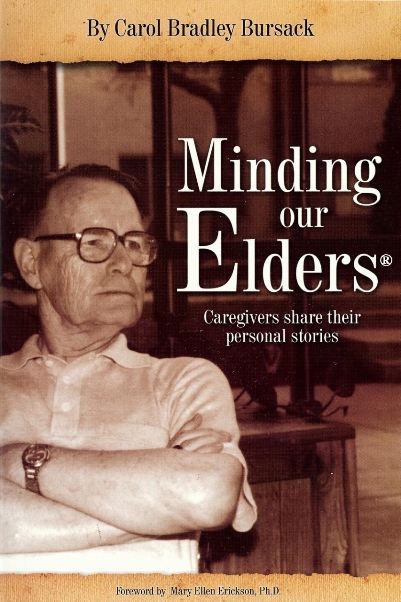‘Virtual Dementia Tour’ Increases Caregivers’ Empathy – Part 2
Part one of Sensitivity Training for Caregivers tells about the first segment of my training experience at a local nursing home. Reading Part 1 first will provide you with the full experience.
Goggled, Hobbled, Isolated by Headphones, I Am Guided Forward
We finally reached the top step. The woman holding my elbow didn’t have much to say. I was hungry for the sound of an unfiltered human voice, but I had to concentrate so hard on climbing the steps, as my sight was distorted by the goggles, that I probably wouldn’t have heard much, anyway. Besides, these headphones were isolating.
We passed through a doorway. Two other women were in a large room. They must have been aides. One aide stood beside a young woman in a wheelchair, likely one of the staff going through training. It was obvious they were waiting for me.
An aide pushed a wheelchair toward me, mentioning “the one in the black pants.” I was wearing black jeans.
“This one’s hospice?” she briskly asked the woman who brought me in.
“Yeah,” she said. “I’ll put her in this chair,” the woman said. “No one who uses this chair lives long, anyway.”
I think the woman who brought me in left. I never thought I’d miss my silent partner, but I felt abandoned here with these strangers.
One aide said: “Did she do anything? Work anywhere? Know anything about her?”
The second aide said, “I think she worked at a newspaper.”
“Well, we need a nickname for her even though she won’t last long,” the first aide said. “Look at her. Not much to her. Let’s call her Nosey. People who work at newspapers are nosey.”
“That or Snoopy,” the other one said.
“Snoopy. Nosey. Pretty much the same,” the first one said. “Don’t know what it is about that chair, but people sitting in it always die fast.”
They Put Me in the Chair Where People Die
One aide was on each side of me now. They tied my arms snugly to the arms of the chair. They lifted my popcorn-filled shoes up to the chair’s footrest. At least my feet felt better.
Then the chair began shaking side to side. “This chair needs fixing,” the aide behind me said. “See, it wiggles.” Once more, she shook the chair rapidly, side to side.
One aide called out: “We’ve got a couple of feeders here!”
She pushed me in my chair, enthusiastically wiggling it as we went, nearly side-swiping a wall in the process. She deposited me at a table. All the while, she was chatting with her co-worker about the “bad luck chair,” and how nosy newspaper people are, and how I wouldn’t last long.
The table was uncomfortably high for me — I couldn’t see anything but shadows…
Continue reading on HealthCentral for part two of my experience in a virtually simulated dementia:
Discover the Difference. EGOSAN: The premium incontinence brand caregivers love – Now Available on Amazon.
Support a caregiver or jump-start discussion in support groups with real stories – for bulk orders of Minding Our Elders, e-mail Carol
Minding Our Elders: Caregivers Share Their Personal Stories: “An inspiring read for caregivers! Minding Our Elders is a series of stories about caregiving. But it is much more than that. It’s a book that helps us view aging and community through the lens of someone well versed in eldercare. Author Carol Bradley Bursack has been a caregiver for a neighbor and six elderly members of her family. These experiences made her the perfect person to interview and share the stories of friends and acquaintances. Through crisp writing and a sharp focus, we enter the lives of those struggling to care for loved ones with dementia and other age-related illnesses. As I read Minding Our Elders, I felt myself filling up with both appreciation and admiration for those who adopt the caregiving role. In addition, I was struck with the inherent value Carol sees in our elders. This is a well-written book that will stir your heart!” …Ann C






